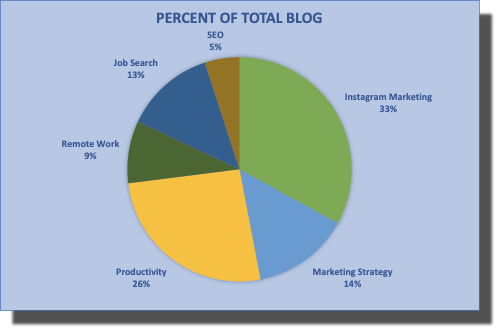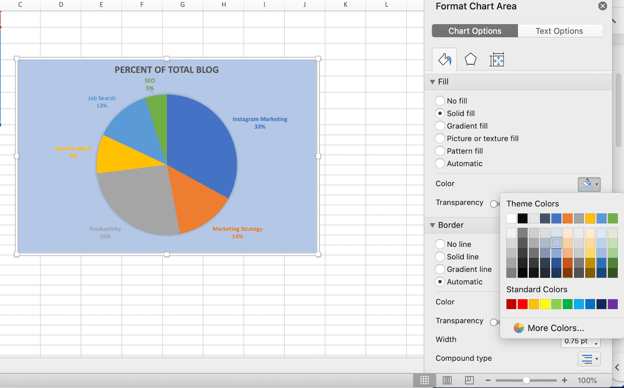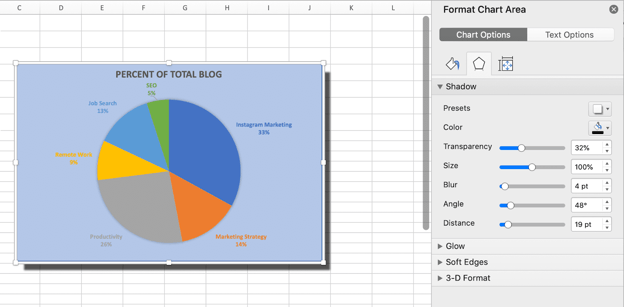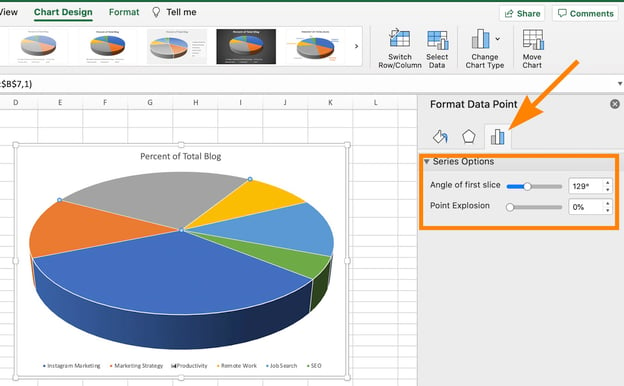As a job seeker, you can often expect to speak with an HR professional before moving onto interviews with employees within the department for which you’re applying.
It’s critical you prepare well for your HR interview. Oftentimes, a company uses their HR department to screen candidates and decide which candidates are most qualified to move forward in the interview process.
![→ Click here to download our free guide to hiring and training a team of all-stars [Free Ebook].](https://i4lead.com/wp-content/uploads/2021/04/c42148d7-13dd-4c38-b907-cff1602ee62f.png)
But an HR professional has different goals when interviewing than your direct hiring manager does. While your hiring manager will ask questions specific to the role (for example, in a marketing interview), the HR professional is interested in gaining broader insights regarding culture fit and whether you demonstrate the company’s values.
With that in mind, let’s go over the definition for this interview and what you can expect.
It’s easy to underemphasize HR interviews in comparison to interviews with, say, your potential manager. There’s even a misconception that the HR round is only a formality. But the truth is that this interview is critical to the hiring process.
It allows you to establish a positive first impression. Your HR contact decides whether you get to move forward, so you’ll want to make sure you exhibit your competencies and establish rapport.
I spoke with Alexa Matthews, a senior recruiter here at HubSpot, who pointed out some additional benefits to the screening process — “It’s an opportunity for a great first impression. In the first call, a candidate can often convey things that are not written on their resume. We take that information so that we can be their advocate and make recommendations to hiring managers throughout the process.”
Additionally, Alexa mentioned initial interview screens help candidates learn more about the role and evaluate their interest in the company. At the same time, these initial interviews help HR professionals set a candidate up for success by learning what is required of the role and providing the candidate with feedback throughout all stages of the interview process.
Let’s go over a few of the questions you might have about the HR interview.
What can I expect from an HR interview?
During an HR round, you can expect high-level, general questions about you, your past work experience, and your motive for looking for a new position. Expect to receive questions that allude to your aptitudes and competencies, but that don’t go too in depth about role-specific responsibilities.
You can expect to be asked about:
- What you expect for your salary
- Why you’re looking for a new role
- Why you’re leaving your current company
- What you’re looking for in a new opportunity
- How you could function in a new environment
- How you’ve functioned in your former environment
- How you’ve handled conflict with coworkers
- How you’ve handled high-pressure situations
The HR interview can also cover the company’s benefits, work hours, and organizational structure.
Is HR round just a formality?
No. HR round isn’t a formality. It’s a highly important step in the hiring process and often the piece that determines whether you get to move forward in the recruitment process.
This is especially true for big firms, where your HR representative becomes an ally during the hiring process. They’re your point of contact for every question and concern you might have as you move from round to round. At HubSpot, recruiters give you feedback to help you successfully move forward.
To help you prepare for any questions you might receive from an HR professional, I’ve curated a list of top questions, along with the best sample answers.
1. Tell me about yourself.
One of the more traditional questions in this list, “Tell me about yourself” is nonetheless a helpful question for HR professionals to get a sense for how this conversation will go, and in which direction they should steer future questions.
Ultimately, you’ll want to be prepared to describe past roles, how those roles demonstrate your strengths, and what you want in a company and role moving forward. Additionally, make sure to include why you believe this role is a good match for your talents.
Sample Answer
“I graduated from ABC University in 20XX. Since then, I’ve worked my way up at Company X, from an intern blogging on the content team to an Associate SEO Strategist. Along the way, I’ve learned I work best in collaboration with a team, as opposed to more solitary roles. As an SEO strategist, I’ve discovered I enjoy the analytical side of marketing, and possess strengths that allow me to excel in those types of roles — in fact, as a result of my SEO efforts, traffic to our site has increased 13% over the past two years. I’m now looking for new challenges and believe your company, and this role, is a fantastic next step.”
Tips
- Focus on your prior accomplishments.
- Provide an overarching overview of your career up until this point without being long-winded.
- Try to use words from the job posting in your answer.
- End with the type of role or challenge that you’re looking for and why this company is a great fit.
- If you’re switching careers, provide a brief reason why.
Things to Avoid
- Don’t summarize your resume.
- Don’t start with where you were born or where you’ve lived (unless it’s related to the role. Say, you lived in Japan for a few years, and the role requires Japanese fluency).
- Leave out personal information.
2. Why are you interested in this position?
This question is a critical indicator as to whether you’re interested in this company and role in particular, or whether you’re simply applying to any role in the field. For instance, it’s not a good sign if you say, “Well, I’m interested in social media, so this role seemed like a good fit.” Instead, you want to mention specific qualifications of the role itself, and demonstrate how those qualifications align with your personal strengths. Additionally, it’s important you mention how you can help drive results for the team.
Sample Answer
“Through my last role, I’ve learned I’m passionate about creating content for social media. I’ve managed to grow our Instagram audience by 7%, and with my team I created a successful Facebook campaign that cultivated an increase in sales by 12%. I’ve followed your business on Instagram and Facebook for a few years and appreciate your brand — more importantly, I see this role as one in which I’d truly be challenged and able to use my strengths. In particular, I believe I’d excel in the client-facing aspect of the role. Meeting with clients to collaborate on social media marketing objectives and goals is something I find exciting and purposeful.”
Tips
- Be as specific as possible — mention how your interest in the industry, your prior experience, or your love for this company make you want to assume the role.
- Bring in information about the company’s culture into your answer.
- Express enthusiasm for the company and its offerings, especially if you’ve used its products before.
- Remember, use words from the job posting to emphasize your interest.
- If you’re switching careers, use this question to go more in depth into your motive for switching.
Things to Avoid
- Don’t mention money or benefits in your answer.
- Don’t be blase (“Oh, I’m just looking for a new role in this field”).
3. Why are you leaving your current job?
This is an opportunity to outline positive benefits you hope to gain by transitioning into a new role. However, one of the biggest mistakes you can make when answering this question is focusing on negative aspects of your current employer, rather than discussing positive aspects of the new company.
An HR professional will mark it as a red flag if you talk poorly about your current employer or company. It illustrates someone who isn’t very professional, has a negative attitude, and could bring toxic energy into their new work environment.
Sample Answer
“I appreciate everything my current employer has done to help me grow, and I believe working for a small startup over the past year has helped me develop leadership skills earlier than I could’ve at a larger corporation. However, I am now interested in transferring the skills I’ve acquired here to a larger organization, where I believe I’ll find more growth opportunities in the future.”
Tips
- Focus on career growth and skill development as a reason for looking for a new role.
- Express appreciation for your current employer without being overly positive (then they’ll wonder why you’re actually leaving).
Things to Avoid
- Whatever you do, don’t complain about your current employer, your boss, or your work environment.
4. Can you describe a work or school instance in which you messed up?
This is an intentionally tricky question. It’s meant to glean insight into whether you can learn from past mistakes. If you can’t think of any past errors, it could be an indicator you aren’t capable of accepting responsibility for your own mistakes. However, creating a long list of past mishaps could make you look unqualified for the role.
You’ll want to answer this question succinctly, and point out an error that doesn’t represent a lack of character. Consider one, well-intentioned error you’ve had in the past, mention it, and then talk about how you grew from that experience.
Sample Answer
“In my prior role when I first became manager, I took on too many tasks myself and quickly became both overwhelmed, and less efficient in my role. Additionally, my team members were frustrated because they felt there was a lack of collaboration on our team. I quickly recognized I needed to learn to delegate tasks and collaborate on projects with teammates, and became a more successful manager as a result.”
Tips
- Only focus on one incident.
- Close your answer with how you’ve improved or grown as a result of the incident, or what you’re currently doing to improve.
- Own the mistake you made without over-criticizing yourself.
- Be brief but earnest.
Things to Avoid
- Don’t shift the blame to a coworker or to the company.
5. Tell me about a time when you experienced conflict with a co-worker and how you dealt with it.
The HR professional isn’t interested in hearing about that time your co-worker said something snide about you in the kitchen, or when your manager overheard you gossiping about a client to a friend.
Instead, this question is asked to gain insight into how you handle professional conflict. At the office, conflict is bound to arise, particularly when you’re working closely with many different people. It’s critical you know how to handle conflict without pointing fingers. Your answer should primarily focus on the solution, and should show a level of empathy towards your colleagues, rather than focusing on the problem.
Sample Answer
“I had a deadline I needed to meet, and I was working with a designer who promised me her designs in time. When the deadline approached, my designer wasn’t ready. It made us both look poorly in front of our clients. To resolve the issue, I discussed the problem privately with my designer. She told me she was stressed out and overwhelmed, and simply needed another week on the project. I told her that was fine with me, but in the future, we needed to be transparent and honest with each other. Moving forward, we established guidelines and became more efficient teammates.”
Tips
- Like in the previous question, only focus on one incident, especifically one that has a positive outcome.
- Always close your answer with the steps you’ve taken to improve or how this incident resulted in positive change.
- Be balanced in your answer — don’t make it seem as if the conflict was entirely your coworker’s fault.
- Show empathy.
Things to Avoid
- Don’t blame-shift.
- Don’t focus on what you did right and what your co-worker did wrong (it’ll make you sound entitled).
6. What do you know about our company?
This is a fantastic opportunity to impress the interviewer. Ultimately, this question aims to gauge your level of interest in the company. The more you’ve researched prior accomplishments, company values, and basic information regarding the product or service, the more you can demonstrate a genuine desire to work there.
Sample Answer
“I know your company is ranked the number one web design firm in Massachusetts. Your mission statement in particular appeals to me. I also know your company emphasizes continual learning and growth, two aspects I find incredibly exciting. I’ve spoken to Jen and Mark, two marketers at your company, and they’ve described the work environment as one full of passion and innovation — which is something I hope to find in my next role.”
Tips
- Mention the company’s culture and your prior experience with its product.
- Be positive in your answer.
- Connect your answer with your desire to work for the firm and assume the role.
Things to Avoid
- Don’t unearth potentially controversial information, such as a company scandal.
7. How would you improve our current product or service?
An HR professional wants to know whether you’re innovative, whether you’re a quick-thinker, and whether you’ll bring new ideas to the role. There isn’t necessarily a wrong answer, here — you just need to show some creativity, and planning in advance will help. Consider potential problems they might be experiencing with their product or service, and how your unique skillset can fill that void.
Sample Answer
“I’ve noticed your product is in English, without current translation options. I believe your product could benefit from multilingual translations, which would help you appeal to a wider demographic. This could help you become more of a global leader. As someone who is fluent in French and Spanish, I’d like to potentially help spearhead a project that moves the product in that direction.”
Tips
- Be honest but brief about the product’s limitations.
- Focus on how you can help the company make the improvement.
- Mention how this change can help the company grow.
- Prepare for this question by using the product or service before the interview.
- Tastefully mention competitors and their products — it will show that you’re informed about the industry.
Things to Avoid
- Don’t “hate” on the product. (“Ugh, I used it once, and the UX was really buggy. I couldn’t get to X page…” )
- Don’t sing too many praises for the competitor’s product.
8. How would your current manager describe you?
It can be awkward to brag about yourself, so while this question may seem weird, it’s really the HR professional’s tactic for hearing how your current boss views you in a work environment. To feel less uncomfortable answering this question, thoughtfully consider your last performance review, and use direct quotes from your boss in your answer.
Sample Answer
“During my last performance review, my current manager told me she appreciates how quickly I take constructive feedback and use it to improve in my role. She’s grateful that she never needs to repeat areas of improvement to me — once she gives me feedback, I take it seriously and make sure she never needs to bring it up again. She has also described me as diligent and trustworthy, two aspects I believe are critical for excelling in any role.”
Tips
- Quote your manager directly.
- Be clear about your strengths — this is really your moment to shine.
- Focus on a single characteristic you’d like to highlight.
- Try to connect the strength to the role you’re applying for.
Things to Avoid
- Don’t focus on a specific accomplishment, but rather on a soft skill that can lead to sustainable growth in the role.
- Don’t start with “Well, I’m really good at…”
9. Where do you see yourself in five years?
This question allows the HR professional to understand your career aspirations — and gauge whether this company is the right place for you to grow. In many ways, this question works as a temperature check to ensure that this is a field you’d like to stay in for the foreseeable future.
Sample Answer
“In five years, I see myself driving organic growth at a medium or large company, overseeing the SEO strategy and potentially managing a team in a leadership role. In the past, I’ve focused on the execution side of SEO, but as I get further along in my career, I’ve wanted to get more into strategy, which helps drive sustainable growth. After working for a few years in X role, I want to lead a company’s SEO strategy to meet acquisition targets and exceed revenue goals.”
Tips
- Connect your answer to the role and how you feel you can grow in the company.
- Be realistic and specific.
- Mention words from the job description.
- Hint at how you can help the company grow later down the line.
Things to Avoid
- Don’t be blase or noncommittal.
- Don’t indicate that you’re hoping to leave the company for a better one, or that this role is just a stepping stone.
10. What questions do you have for me?
When an HR professional asks you this question, you might be eager to end the call and say, “Nope, no questions.” This would be a mistake. Having thoughtful, smart, strategic questions demonstrates your interest in the role, as well as your potential value as a future employee. They want to hire candidates who will ask questions and move the company forward, and this can’t happen if you accept everything as-is.
At this stage, you should consider what your genuine concerns are regarding the role. You might ask the interviewer, “What are the company’s values? What characteristics do you look for in candidates in order to represent those values?” Or, perhaps you’ll say, “What do you enjoy most about working at Company A?”
Ultimately, an interview isn’t just about allowing an HR professional to form an opinion of you — it’s also a chance for you to get a strong sense for whether you even want to work for the company. So use this last question to your advantage.
How do I prepare for HR round?
The HR interview is your only chance to make a lasting first impression. Because it determines whether you get to move forward, it’s important to prepare for the interview as if the HR professional gets to make the final decision. (They likely won’t, but they do determine whether you get to move forward.)
Luckily, it’s easy to prepare. Aside from knowing the questions you might be asked, you’ll want to research the company, reread the job description multiple times, practice your answers beforehand, and compile a list of questions to ask the HR rep.
Let’s go over these one-by-one.
1. Research the company.
Researching the company is a no-brainer, yet many of us walk into an interview with only a surface-level understanding of the company and its product offerings. In your research, seek to not only understand what the company sells but who it sells it to. Use the product beforehand if you can. Take a look at the firm’s competitors. Last, try to get a thorough understanding of the company’s culture.
2. Reread the job description multiple times.
I know that it’s difficult to keep track of job postings, especially if you’ve applied to tens upon tens of jobs. Try to find the original posting (or a copy of it on a job search site) and reread the description. If possible, print it out and highlight sections that you feel most match with your qualifications. Underline key terms, then bring those terms into your answers.
3. Practice your answers.
Practice, practice, practice. Practice in front of the mirror, in front of your camera, and in your room. But don’t memorize your answers — simply go over them a few times so that they’re eloquent, enthusiastic, and brief without feeling wooden or scripted. Use the STAR method to structure your answers. Don’t forget to focus on positive results.
4. Compile a list of questions.
These questions should be general enough that an HR professional can answer them (you wouldn’t want to ask something too team- or role-specific), but targeted enough that they feel tailored to the company.
You might ask general questions regarding the role, like “Are there opportunities for professional development within the role and department as a whole?” If they can’t answer these sorts of questions because they’re not acquainted with the team, you can ask about their experience and what it’s like to work at the company.
Prepare for Your HR Interview to Ensure Success
While the HR interview gets a bad reputation for being a formality, it’s arguably the most important step in the hiring process. Prepare beforehand, practice your answers, and research the company and its culture. The HR professional is your ally during the process. You want them to know that you’re the perfect fit for the role, which will get you closer to a job offer.
Editor’s note: This post was originally published in October 2018 and has been updated for comprehensiveness.


![]()

![→ Download Now: SEO Starter Pack [Free Kit]](https://i4lead.com/wp-content/uploads/2021/04/1d7211ac-7b1b-4405-b940-54b8acedb26e-3.png)



![→ Free Download: Social Media Calendar Template [Access Now]](https://i4lead.com/wp-content/uploads/2021/04/3e56e15d-47bd-46c9-a256-99fde52abfe7.png)









 3. Select the video you want to upload, choose your preferred cover, and add a title and description.
3. Select the video you want to upload, choose your preferred cover, and add a title and description.





![Free Download: How to Create a Style Guide [+ Free Templates]](https://i4lead.com/wp-content/uploads/2021/04/76520ae5-1a3b-4055-9e8e-95e150b90965.png)
















 2. On the setup page, click on “Get Started.”
2. On the setup page, click on “Get Started.”
 4. Review the details and click “Submit for Review.”
4. Review the details and click “Submit for Review.”









![→ Free Download: 4 PowerPoint Presentation Templates [Access Now]](https://i4lead.com/wp-content/uploads/2021/04/2d0b5298-2daa-4812-b2d4-fa65cd354a8e.png)

 Ultimately, design is an art, not a science. However, ideally you can use these trends as inspiration for your own branded designs in 2021 and beyond.
Ultimately, design is an art, not a science. However, ideally you can use these trends as inspiration for your own branded designs in 2021 and beyond. 
![→ Click here to download our free guide to hiring and training a team of all-stars [Free Ebook].](https://i4lead.com/wp-content/uploads/2021/04/c42148d7-13dd-4c38-b907-cff1602ee62f.png)


![Download 9 Excel Templates for Marketers [Free Kit]](https://i4lead.com/wp-content/uploads/2021/04/9ff7a4fe-5293-496c-acca-566bc6e73f42.png)


















